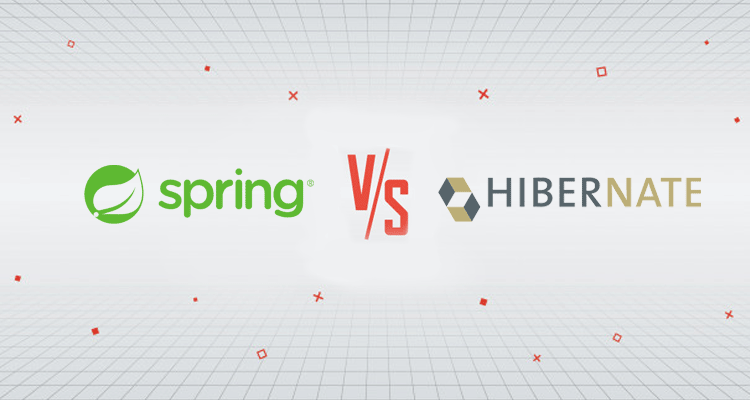SPRING Vs HIBERNATE

Spring is an open-source framework developed by pivotal is an application framework and inversion of control container for the Java platform which provides infrastructure support for developing applications. Hibernate is a Java framework that provides an object-relational mapping to an object-oriented model to the relational database. It means hibernate provides from Java classes to database tables and also provides data querying and retrieval facility.
Spring is a framework that helps you organize your app and allows you to focus more on business logic and it takes care of infrastructure. Spring makes it easy to develop enterprise Java applications and provides support for Kotlin and Groovy as alternate languages on the JVM and provides flexibility to develop applications with any kind of architectures based on needs. Spring will also allow you to build a class where you define methods to answer the type of Rest requests you except your app to receive (making it a Rest API). In spring, developers can write their logic in Plain old Java classes and provide metadata in an XML file and spring container creates objects which can be used by developers in the project. The dependency on the application is provided by the spring framework and it is called dependency injection.
Hibernate framework provides an abstraction layer which means programmers need not worry about implementation. If you are using a database in your app to persist data, then Hibernate which is also a framework can help you use your database data as Java objects without doing much work. Hibernate framework is used to develop persistence logic, which means storing and processing the data for long use. There is only a little configuration you need to do. When you receive a request asking about some customer data that you have in your database, it is easier to deal with Java objects instead of connecting to the database and fetching the records. So you can use Hibernate to map your customer and product classes with the corresponding tables in the database.
Major Difference Between Spring and Hibernate:

- Spring is an open-source, light-weight and cross-platform application framework for easy application development as it takes care of infrastructure and developers need to concentrate on business logic, whereas Hibernate is an entirely different framework for ORM between Java classes and database tables and provides data persistence.

- Spring framework is useful for transaction management, dependency injection; aspect-oriented programming for applications, whereas the Hibernate framework is useful for object-relational persistence, access data layers, and query retrieval services for enterprise-level applications.

- Spring is an open-source application framework developed by pivotal which provides infrastructure support for developers and lets them concentrate on logic, whereas Hibernate is an open-source, lightweight, a cross-platform framework is developed by Red Hat.

- Hibernate framework offers object-relational mapping between Java classes and database tables. It doesn’t have any modules, whereas the Spring framework has a lot of modules some of them are Spring core, Spring Security, Spring MVC, Spring JDBC, and many more modules.

- Spring framework has support for connection pooling by changing the configuration file, but it has a problem like the connection pool may be getting exhausted, whereas the Hibernate framework has support for connection pooling by storing database connection details in a cache and used later which leads to increase in performance.

- Hibernate framework has support for a version that is the user can define version fields and update whenever there is a change in the dataset whereas Spring framework doesn’t have support for versioning so developers need to handle while developing.

